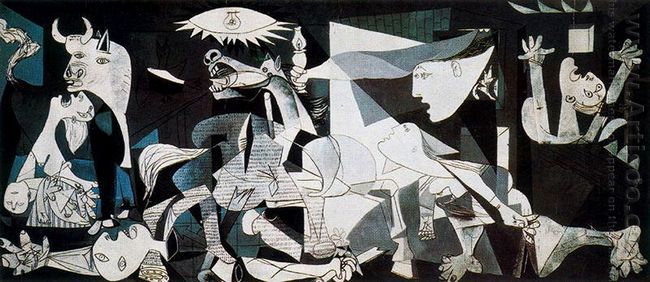As one of the greatest and most influential artists of the 20th century, Pablo Picasso is not only a painter but also a prolific dramatist and sculptor. The most important contribution by him is co-founding of the Cubist movement, which is a kind of painting that divide object into different parts then stack them together in one plane. As a result, the objects totally change the original shape, but the transformed figures evoke the view’s interest to probe into the meaning of painting. Furthermore, Picasso is good at making use of symbol. Just as dragon means power in China, images in Picasso’s painting always have symbolic meaning. Guernica is a masterpiece of this kind.

Guernica depict the panic after the bombing of Guernica on April 26, 1937, which was an aerial attack on the unarmed civilian in Basque town of Guernica, Spain, leading to widespread destruction and large civilian mortality during the Spanish Civil War.
Picasso said that he paint the cow to stand for the fascist and the horse to be the symbol of the painful civilians. He also painted several figures around the horse to present destruction and desperate. To the left, a mother howls up into the sky holding her dead child, a soldier lying on the ground with a broken sword, to the right, a woman stretch her arm to light the dark with an oil lamp, a figure watch all this desperately. No bomb, no tank, no airplane. However, these impressive figures bring us into an ambiance filled with horror and misery. Picasso relied only on three colors, white, black and grey to adding to this horrific atmosphere.
“Art is a lie that makes us realize the truth” says Pablo Picasso. Although Picasso did not participate in the war by himself, he demonstrated his anger and hate for war by his own means.